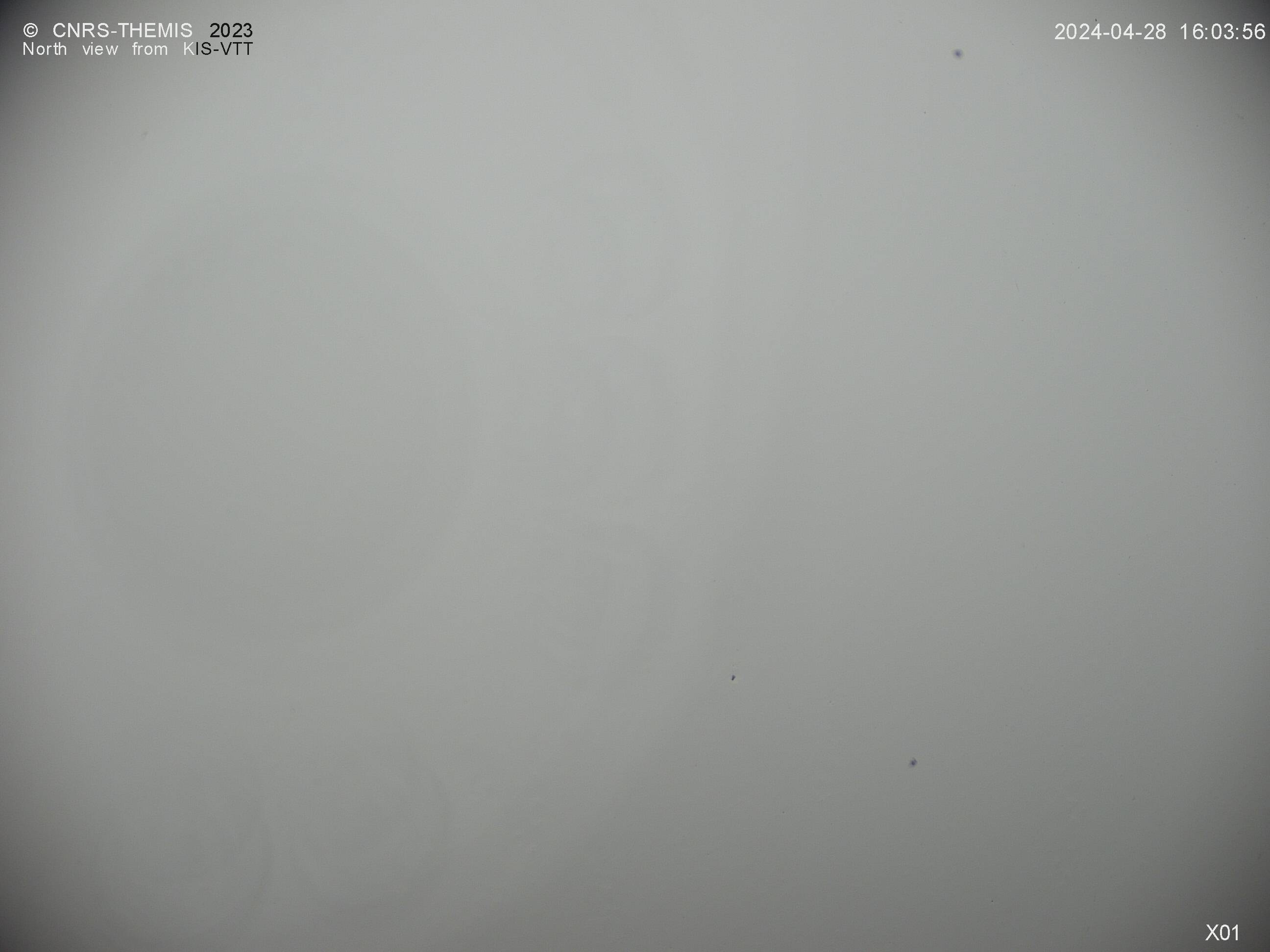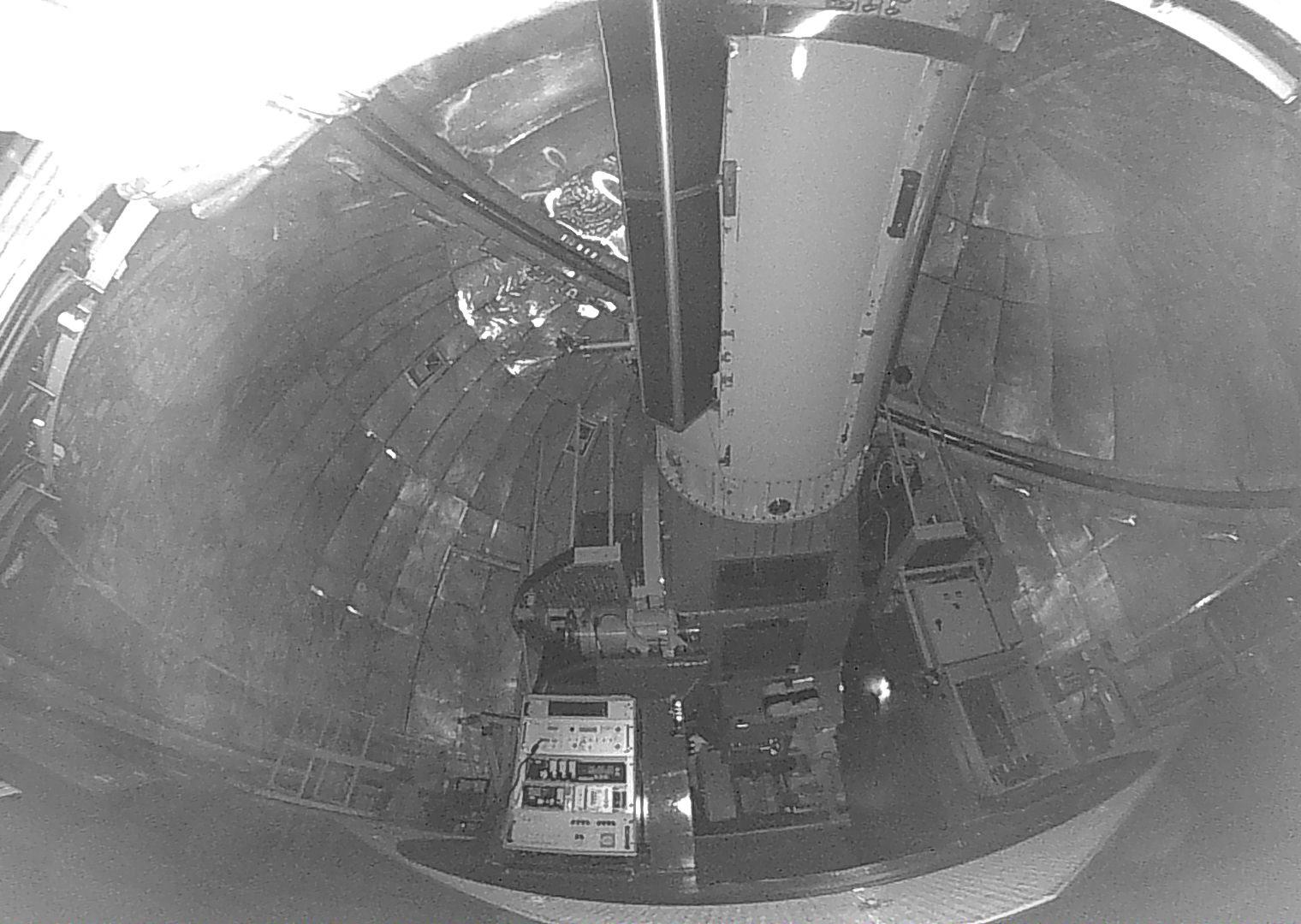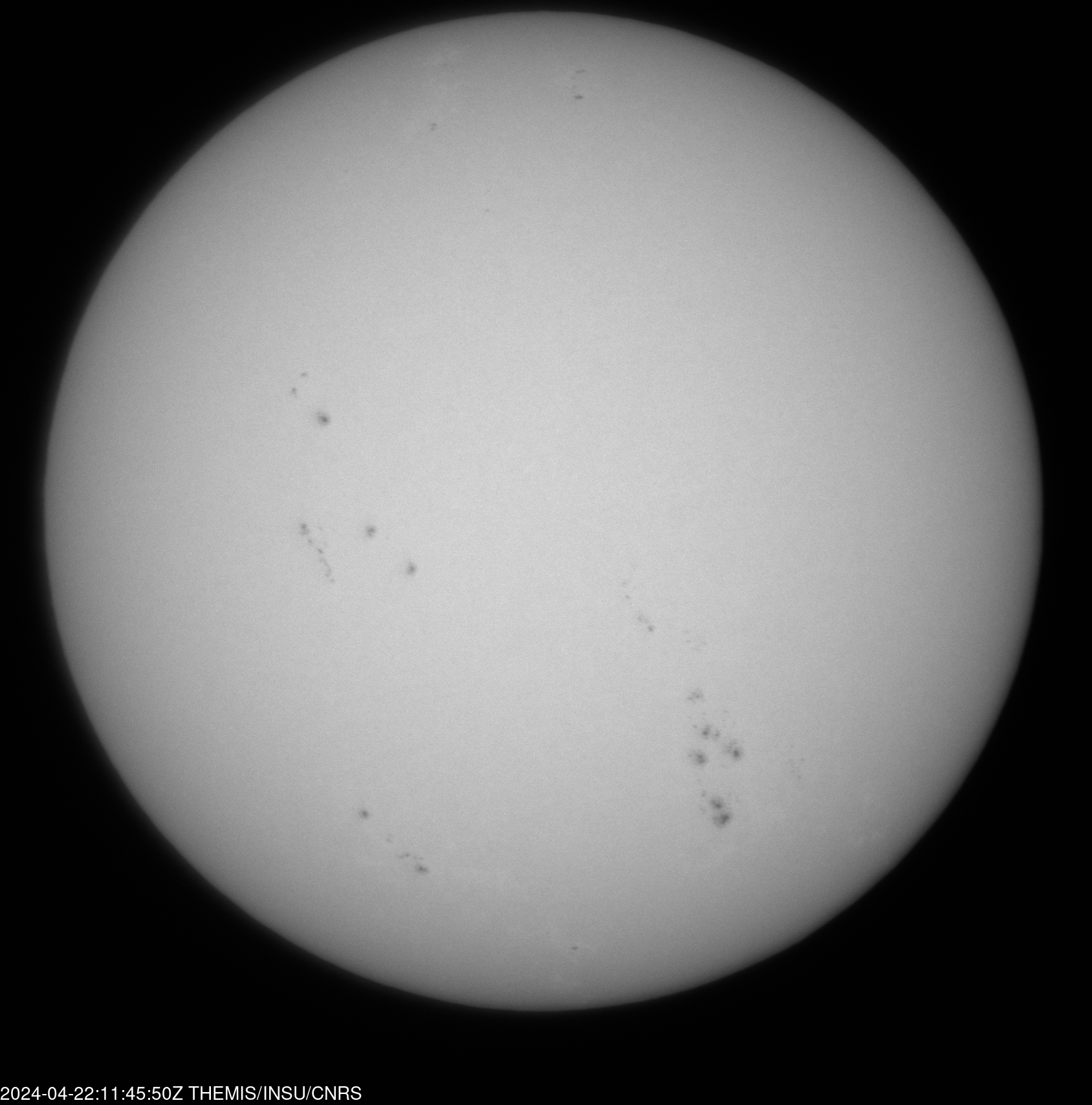THEMIS Solar Telescope
|
The “Télescope Héliographique pour l’Étude du Magnétisme et des Instabilités Solaires” (THEMIS) of CNRS-INSU is a 1-meter-class optical solar telescope, primarily dedicated to studying solar magnetism and the dynamical processes within the Sun’s atmosphere (such as sunspots and solar flares). THEMIS can also perform observation of near-Sun objects such as Mercury and comets. THEMIS is located at the Teide Observatory of IAC, with a base office in La Laguna, in Tenerife, Canary Islands, Spain. ¡¡¡ Call for the 2026 observing campaign is open !!!
November : First screw of the Italian IBIS 2.0 Spectro-imager @ THEMIS. Click for information on: How to reach THEMIS locations ; How to contact the THEMIS team |
Overview of telescope status
|
|
The THEMIS telescope and its science
Technical & scientific information about THEMIS
THEMIS scientific objectives
THEMIS administrative structures
Observing with THEMIS
Information for research scientists wishing to observe with THEMIS
2026 observing campaign
Weather at THEMIS location and weather forecast
THEMIS data products & data access
THEMIS Scientific research & results
Scientific research with THEMIS
THEMIS scientific highlights and news
THEMIS observations and media galleries
THEMIS image of the month: November 2025
|
IBIS 2.0 is coming! |
THEMIS telescope management
Internal pages for the THEMIS team
Previous THEMIS front page
© 2025 CNRS-THEMIS
Terms of use: unless otherwise specified, all graphical (webcam records, movies, pictures) or non-graphical material (text) from this site is property of CNRS-THEMIS under a Creative Commons CC-BY 4.0 license.







